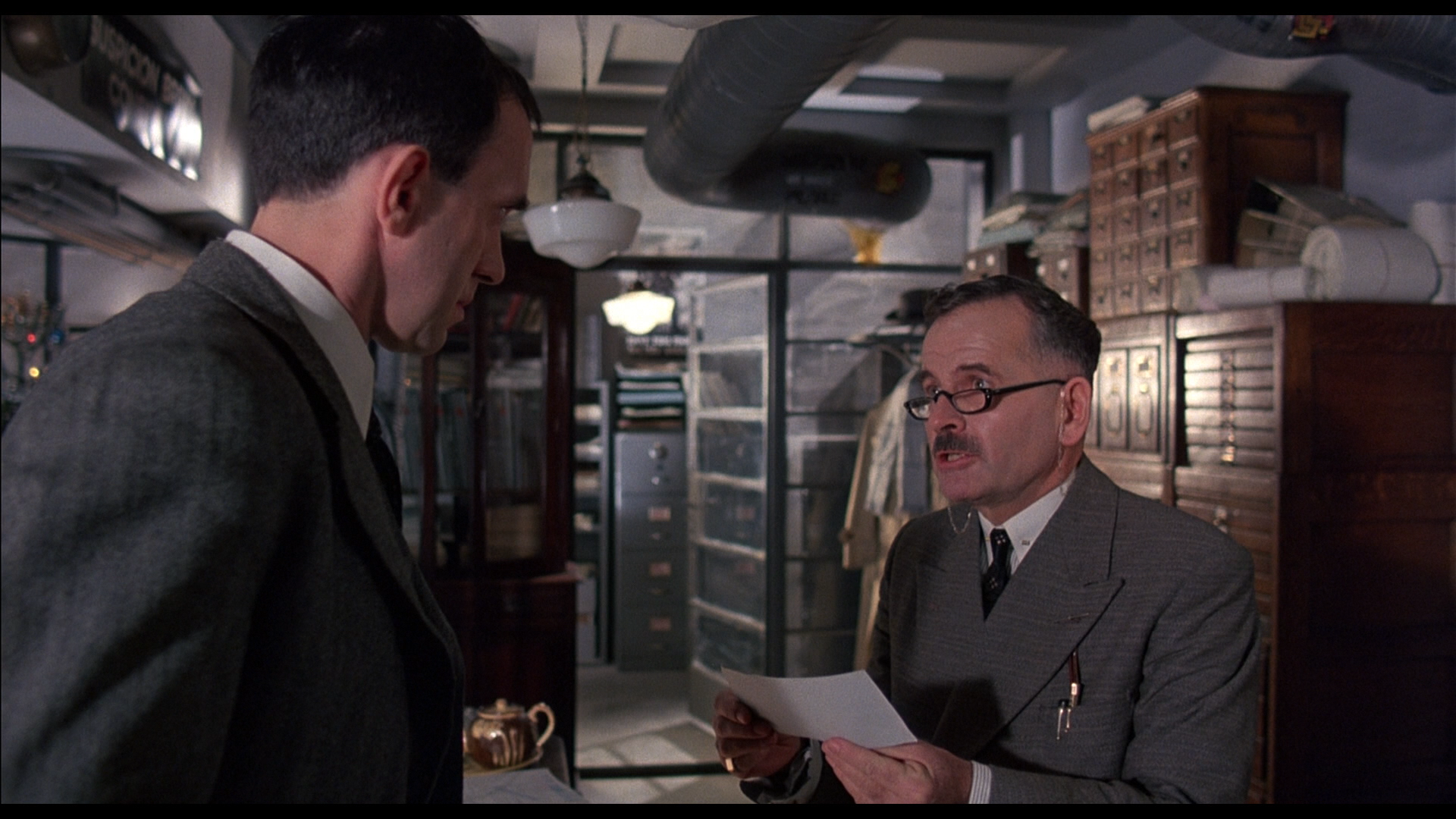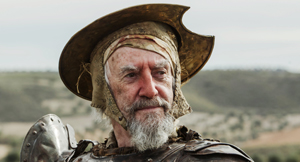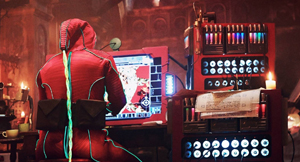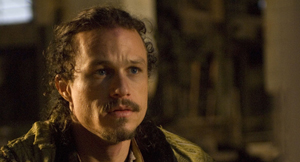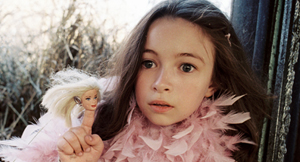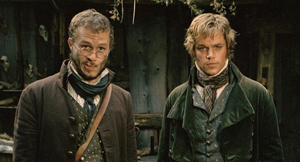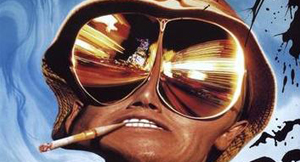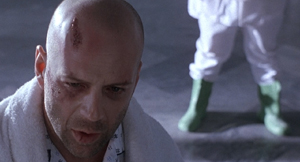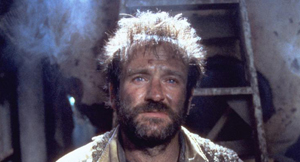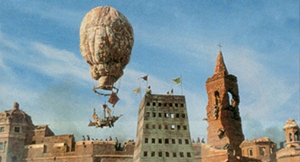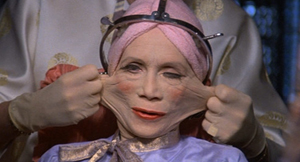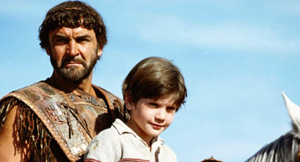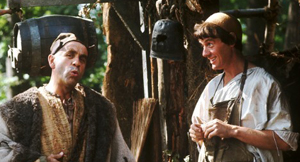Adapted from “Terry Gilliam: El Sonador Rebelde” by Jordi Costa and Sergi Sanchez. Used with permission.
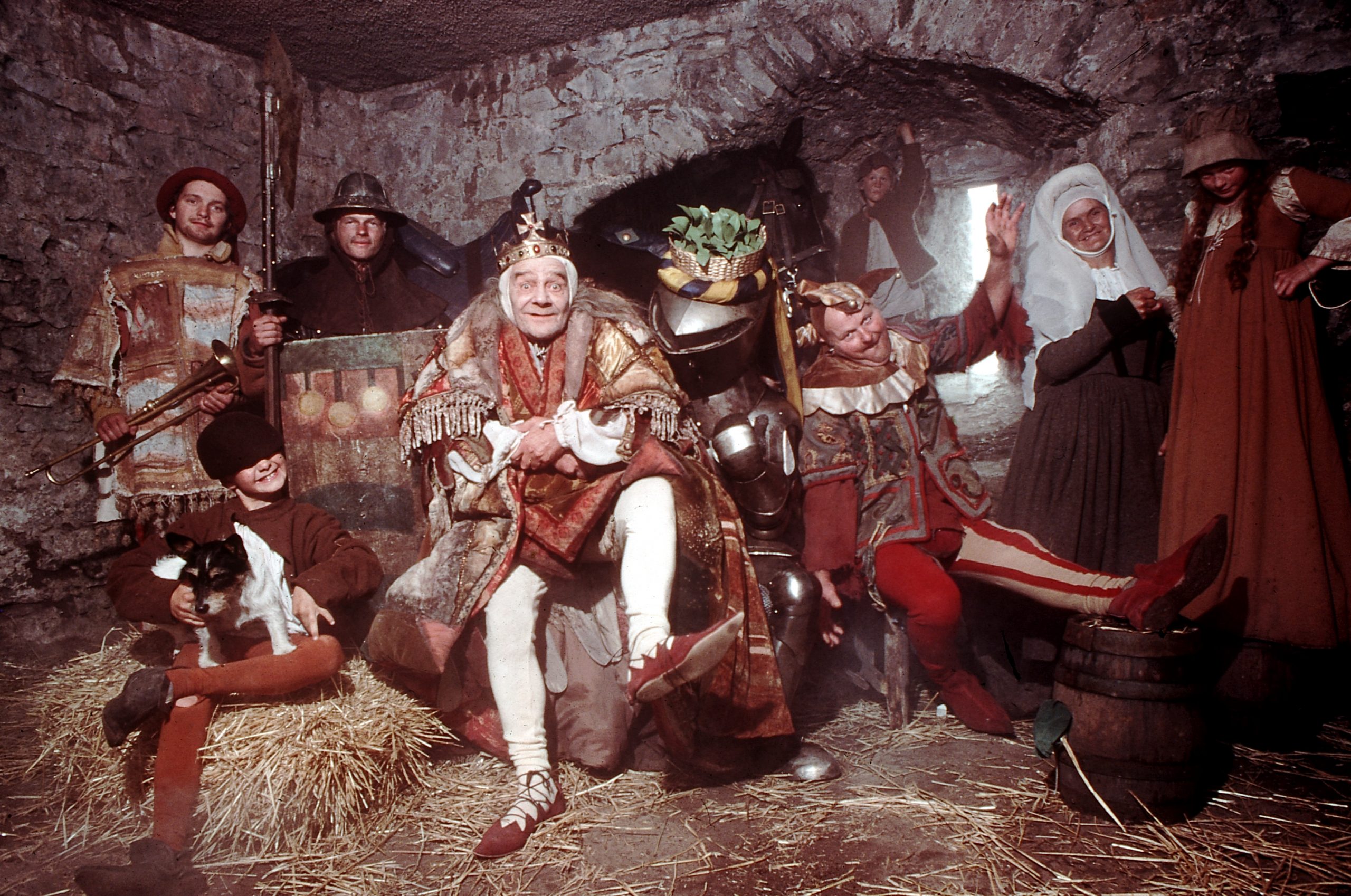
Terry Gilliam says that his first failure was Alice in Wonderland. In 1961 he was working at a summer camp, where there were children of big Hollywood stars, of people like Danny Kaye, Hedy Lamarr and William Wyler. Summer camps usually lasted eight weeks. The sixth week was the week for parents’ visits. Gilliam was the theatre teacher and he wanted to put on Lewis Carroll’s psychedelic novel, with a spectacle… a la Cecil B. De Mille. A few days before the show, he gave up. It was too much for him. “I always remember how important Alice was for everything I do. The title and the monster in Jabberwocky, the girl in Munchausen is Alice. Alice is an adult. No doubt the most grown up of them all”, says Gilliam. The fact that he chose an author considered by many the undisputed father of the concept of nonsense to begin his career as a director should not surprise us, especially if we consider that the Monty Python group -and the Harvey Kurtzman school and MAD magazine – descend genetically from Charles Lutwidge Dodgson. From a linguistic point of view, the definition of “nonsense” is a group of words that are syntactically well ordered to give the impression that they refer to something, when they do not, in actual fact, refer to anything.
Alice herself explains with crystal-clear lucidity what interested Gilliam about Jabberwocky, a play on neologisms and linguistic hieroglyphics, situated somewhere between mathematical theorem and literary pastime. After reading seven verses, Alice said “that it was very nice”, before almost immediately saying “it’s as though my head were filled with ideas, but when all is said and done, I don’t know what they mean. The only thing that’s clear is that ‘someone’ has killed ‘something’”. A young shepherd has killed a monster. Gilliam turns this simple sentence -a concept: someone killed something – into the point of departure for a medieval story which, in some way, rids itself of the anachronisms which, in Monty Python and the Holy Grail, led to hilarious moments. It’s not at all surprising that some Monty Python fans didn’t find Jabberwocky at all funny, given that it is a lot more melancholic than the film directed by Gilliam and Jones. It is, in fact, a reaction to Monty Python and The Holy Grail, a return to the unexplored territories of the Middle Ages, written with an old friend, Charles Alverson.
Alverson and Gilliam met at Help! when Alverson was about to leave the magazine and look for work elsewhere – it was about to become a quarterly – and Gilliam was going to replace him. Gilliam slept on Alverson’s sofa, in his flat on E76th Street, until he found a flat in the Village. After NewYork, they went their separate ways, but 1966 found them living in adjoining canyons in the Hollywood Hills. Gilliam moved to Britain in 1967, and Alverson followed in 1969. Gilliam put him up in his Putney Bridge flat and introduced him to the Monty Pythons. Alverson moved to Wales but they kept in touch. Gilliam got him freelance work with comic Marty Feldman and animator Bob Godfrey. Their film collaboration began at a party at Terry Jones’s house in the summer of 1975. It was then that Gilliam suggested writing together the script for Jabberwocky. Alverson moved to Cambridge in September of that year, and work began. Their target was a finished script as early as possible in 1976. The project came up after Gilliam rejected the idea of making a series of animations for the film “All this and World War II”, a documentary that used images from World War II and Beatles music.
This is how Alverson recalls his meetings with Gilliam for the writing of the script of Jabberwocky: “Terry used to come to Cambridge. I used to work in my garage. I’d be behind the typewriter and Terry would sit in front of me reading a magazine until I got fed up and I’d force him to write something. Terry had never been a writer. He used to write texts for his animations, but he’d never written anything that required a continual effort. We’d say: What do you think of this? And this? Then Terry’d go back to London, and I’d stay in Cambridge working on three or four scenes more. He’d take them to London and we’d discuss them in the studio, and he’d rewrite them. Only then would he sit down in front of the typewriter and spit out ideas. Terry’s a much better re-writer than writer”. That talent for recycling other people’s ideas, and most of all, that obsession for improvising from nothing could shape a story, using, as a point of departure, something as Martian as Carroll’s poem about Jabberwocky. At first, there were only two scenes: the first scene – the death of Terry Jones, adorned with a small saunter into cut-out animation – and the final climax.
The modest budget they had for Jabberwocky forced them constantly to borrow sets and costumes from other films. Gilliam recalls how they stole the sets from Oliver (1968), Carol Reed’s musical, and how they bought other sets from a German company that had just done The Marriage of Figaro, for five thousand pounds. But of course none of that was in any way comparable to the terrible experience of Munchausen: it was a pleasant shoot, especially because in Jabberwocky, Gilliam realised how much he liked to work with actors and how different that was from what he had done with Monty Python: “In Jabberwocky the actors added lots of things – for instance, they changed dialogues – but they always maintained the spirit of the film we’d begun together. They helped me to make it, while with Monty Python all our ideas were there, and when you started to play a scene, everybody had a different way of doing it”.
Jabberwocky is an explosive combination of chivalric novel; it has all the clichés of medieval literature, especially those of his much admired Don Quixote and the picaresque novel. The Monty Python universe, well represented by Michael Palin – the absolute star, his interpretation of Dennis is moving and funny, Terry Jones – attacked and killed in the first scene – and Gilliam himself is a deliberate hyperbole, and the running gag about the workings of a clock, which is something out of the theatre of the absurd. The moment in which Dennis runs after the potato while people kick him around like a ball, with the background noises of the tournament, like a football crowd, is profoundly Pythonesque. Gilliam, who began to feel a strong desire for independence, wanted a medieval atmosphere of sensuality, sordidness, which stank, adorned with all the padding of the corners of palace salons. He didn’t feel like practising the verbal dadaism of Cleese and Chapman, nor exploiting the visual surrealism of Jones and Palin: he just wanted to mix the two Pythonian currents and wash them down with the mud and grime of the Middle Ages, so far removed from the glamour of the films of Richard Thorpe. He wasn’t interested in gratuitous anachronisms either: if Palin took off his trousers he should not be wearing underwear, because in the Middle Ages no one did. The atmosphere of the period should smell (bad), with the kind of malodorous intensity of Pasolini’s films, especially The Canterbury Tales (1972) and the early Woody Allen – Bananas (1971) and Love and Death (1975)-: “He understands how to make something look real”, says Gilliam, “and that’s where the comedy comes from. The more real you make it, the further you can go. But if everything is light and you stop half way, you end up with nothing in your hand”. The recreation of the atmosphere should make things look as realistic and as heavy as in Bergman’s The Seventh Seal. Sweaty, greasy and rotten, Medieval society is the only society in which if you give someone a rotten potato as a symbol of love it can appear as normal as an engagement ring would nowadays. Gilliam didn’t mind scatological detail –“anything dirty or anal, we were interested in!”- or gore -the tournaments, in slow motion, looked like something out of Peckinpah; the abundance of blood that splashes all over the members of the British Royal family, as usual, locked into a tight close up, like a monarchic photograph, could be part of any of the sequences of the fights in Paul Verhoeven’s Flesh and Blood (1985) – if the use of such elements, which were essentially primary elements, succeeded in transmitting the brutal and oppressive atmosphere of medieval cities: “I worked on atmosphere as much as I could, always striving to make it look worse than it really was. You can’t go any further by adding more shit… I’m sure it was a reaction against Doris Day and Rock Hudson movies, where everyone is so clean and so impeccably dressed, with perfect, shiny teeth. Life’s not like that. Life is chaos!”.
Jabberwocky, in sinking its claw into bad taste and an abundance of scatological elements, can have a clear comic intention – Palin putting his foot into dragon shit or a beggar explaining how he gladly cut off his foot so that people should give him money: extremely Pythonesque moments- or a clear documentary intention -the garbage that the Fishfingers throw out of the window. Both objectives happily exist and co-exist in Gilliam’s film, and are made homogenous by a very careful, picturesque style, where one can almost smell the paintings of Bosch and Brueghel, and almost feel the grotesque forms of the etchings of Dore, and the drawings of John Tenniel for the original edition of Alice in Wonderland. The realist tone of Jabberwocky gradually takes on a more abstract air, as the film goes on, until we get to the final sequence, set in a patch of wasteland, littered with stomachless corpses, more typical of Venus than Earth. Gilliam says that he had found that strange landscape by chance, while he was driving along. He immediately decided to change the beach on which they had decided to shoot this desolate valley – the place where a monster would love to live.
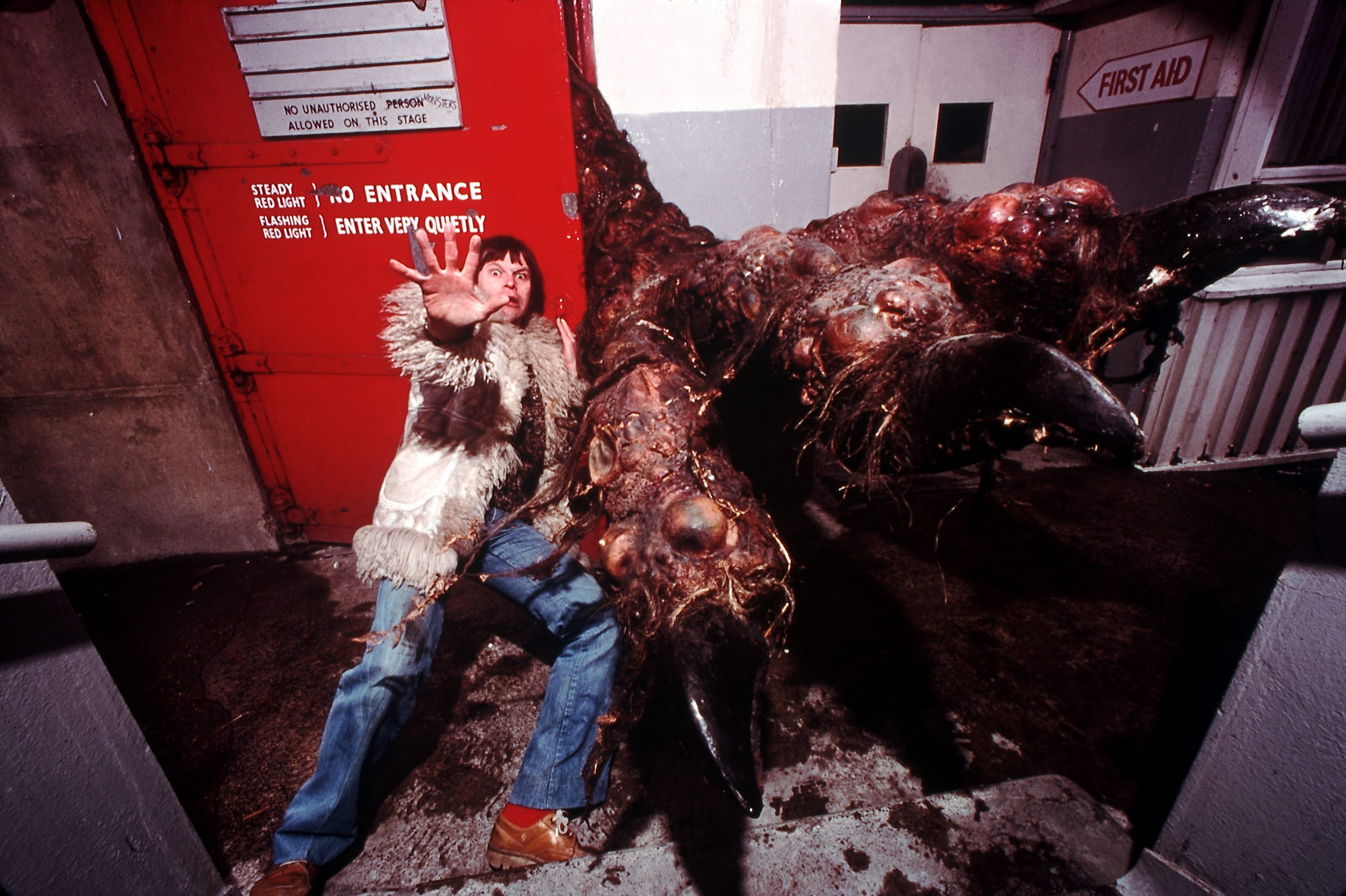
Dennis is the first link in the chain of dreamy, naive characters that unfold in the film universe of Terry Gilliam. Fatherless, like Sam Lowry in Brazil, he travels to the city full of illusion, bent on making a name for himself in the world of business. Dennis lives, as does Sam Lowry, in constant self-deceit. He thinks that the city and progress are going to free the poor from the yoke of misery. His father, whose voice reminds us of Tuttle, the terrorist in Brazil, makes a declaration of principles which would be valid for the definition of Gilliam’s view of art throughout his long film career: “you haven’t got a clue about what art is”, he says to Dennis, “nor can you appreciate the beauty of wood, because you’re on idiot, an ambitious type. You’re going to destroy craftsmen… You’re not the son of on artist”. Gilliam adores handmade things and detests heavy industrial production. Hollywood is Jabberwocky, the land of the perfect bureaucracy, the monarchy and religion, all obsessed with maintaining fears and superstitions about anything that can’t be explained. Jabberwocky is the instrument used for the conservation of a power, as miserable as the Ministry of Information in Brazil, or the war against the Turks in Munchausen.
Dennis is so innocent as to believe that the only solution, if one wants to survive, is to become fully integrated into the structures of power. Dennis is, deep down, like Jerry Lewis in Who’s Minding the Store? (1963) or Jacques Tati in Playtime (1967): he wants to belong to a community, which is in contradiction with his tendency to destroy it. That’s what he does in the arms workshop, when, he involuntarily turns the blacksmith’s shop into a catastrophe zone, in a gag that would have done the likes of Frank Tashlin or the Jeunet and Caro in Delicatessen (1991), proud. If, after killing the monster he becomes a hero, it is in spite of himself; and he doesn’t even get what he so desperately wants: the hand of the dreadful Griselda. His brand of romanticism is doomed from the moment he marries the princess, or when he is absorbed by the system. His road to dusk is the first of the false happy endings in Terry Gilliam’s cinema. The completely disheartening shot with which the film ends, with a miserable Michael Palin gradually fading into the light of a fictitious sun, is the result of the collision of the two fables that are being told in Jabberwocky: “One is a classic fairy tale, with a happy end, in which the handsome young man gets the hand of the princess and her entire kingdom as dowry. That’s what everybody wants, but Dennis, the hero of the film, wants to seduce Griselda, that fat, ugly girl and open a barrelshop”, says Gilliam, “but the funny thing about it is that he chooses the wrong fairytale, like the Tex Avery characters. His happy ending becomes a horribly real nightmare”. Dennis, like the dreamy Alice, has crossed over on to the other side of the mirror and now finds himself completely immersed in Nightmareland, and accepts it. Hardly has the first draft of a film script ever revealed so much about the future of a film director, considering that the draft is a film in which the characters die and fart, and in which the peeling castle bells means that people are being hanged.
The Man Dressed as a Dragon
Terry Gilliam used an old trick that American B series magicians – and Inoshoro Honda, in Godzilla – had patented with different fortune in the fifties: man dressed as monster. The trick consisted of the man in question walking with his back to the audience, which effectively changed the effect of the movement of his legs and made him look like a chicken walking, awkwardly. “His arms became wings. The head and the neck were controlled by strings, like he were a puppet. His jaws were moved by pneumatic cables. Once you’ve got a guy in a disguise everything is much easier, and much better prepared than a machine”, Gilliam explains. “Whenever I’ve asked people how they thought it was done, no one ever thought it was a guy walking with his back to the audience. It is so simple that no one ever realised. Many good special effects are usually quite simple. Everything is sorted out in the editing room. I hate to feel trapped in that world of special effects experts who show off in front of others and try to concentrate everything into one single shot and make the whole thing very expensive. I prefer to solve such things with quick editing. The audience doesn’t realise, and, in the final analysis, that’s not the theme of the film. A film is not for the special effects team to show off. Effects are just part of the entire process”.
Marketing
Not many people remember that Terry Gilliam was already a misunderstood artist long before the release of Brazil and Munchausen. One of his fears was that the work should be branded no Monty Python film. Jabberwocky had to be the birth certificate of Terry Gilliam as a film director. For the producers, the easiest way to sell the film was to use his name and fame as a member of an outstanding British comedy group, but Gilliam insisted that it would be counterproductive, and was proved right after the first few screenings. The audiences that went into the cinemas expecting to see the latest thing by the Dadaist Python geniuses, came out quite confused. Where are all the laughs? Jabberwocky was a brutal, unpleasant film. That convinced producers: they could not hide behind the Pythonian denomination. Gilliam himself had done his utmost to protect himself by doing different versions of the final cut. In one version, the film started on a far funnier note, and slowly, took on a different tone. Audiences laughed twice as much as they should have, but eventually they realised that they were laughing at something that wasn’t funny. So Gilliam decided to tone down the beginning of the film in order to subliminally inform the public that they were not about to see a Monty Python film.
Gilliam went mad when he saw how the film was being advertised in America: Monty Python’s Jabberwocky. He sent letters of protest, to stop such an awful publicity stunt, but to no avail. The box office result was a clear reflection of the way in which the film had been promoted: in those countries where Monty Python were media stars, it was a failure, and in those countries where people had no idea who Monty Python were, it was a success. Gilliam and Palin remember going to the screening of the film at a Spanish festival, which they found particularly gratifying: “It was being screened in a small cinema in a back street. The audience were people who had nothing to do with the festival, just people who had gone in to get away from the afternoon heat. The film wasn’t even sub-titled. They were all working class people, who certainly understood not a word of English, and they loved it. It was great, the best screening I’ve ever been to, and Mike and I couldn’t believe it. Once again, people with open mind”. But that Spanish experience was certainly an exception. It was not surprising that after that experience Gilliam didn’t feel like working with the four other Pythons again.
The Pink Panther meets Jabberwocky
Fritz Freleng would never have imagined that his sophisticated pink creature was going to meet an abominable medieval monster. Destiny and Blake Edwards were responsible for that. At the same time that Gilliam was taming his beast of the kingdom, Edwards was shooting one of the many sequels to the Pink Panther in Shepperton studios. He had a lovely set of a sewer as well as a catapult: Gilliam needed both things. The reply from Edwards’ production team wasn’t exactly positive: they’d rather destroy their sets than have someone else use them. It didn’t matter that the producers of Jabberwocky were prepared to pay a generous sum of money for them. “They were so obsessed with the idea that our film might be released before theirs”, says Gilliam, “that they didn’t realise that there was no evil intention behind our request. The thing was to disguise everything we had, but Edwards burnt his catapult and destroyed the set of the sewer”. It was the Pink Panther director’s fault that Gilliam ended up having to forego a scatological scene in a sewer, which was not in the original script: “It suddenly occurred to me that a good way of entering the castle would be through the sewerage system, so that Dennis would appear covered in shit. In the end, we probably improved the idea by having the castle guards piss on him”, Gilliam admits. Dennis eventually gets into the city because one of the guards has to go off to relieve himself. Either way, shit was always the protagonist.


